
Welcome back to the Wild vS Data Reaper Report! We’re the experts from r/WildHearthstone, and we have partnered with Vicious Syndicate to create the Wild Data Reaper Report. We will be contributing the write-ups and analysis for the report, backed up by the statistics that Vicious Syndicate has become famous for. The data presented in this article is based on 35,000 games.
This is the first Data Report of the Saviors of Uldum expansion. We’re later than usual with this report due to the quick balance changes that occurred a month ago which finally took down the scapegoat of Wild, Barnes. A new expansion that brought about many powerful cards coupled with impactful balance changes have led to a major shakeup in the Wild meta that we’re excited to help you break down.
In order to ensure that we can provide updated reports as quickly as possible, we encourage you to register to contribute your data to the Vicious Syndicate project! Signing up is quick and easy and your contributions are extremely important, and much appreciated!
Quick Links
Class/Archetype Distribution | Matchup Winrates | vS Power Rankings | Meta Score | Class Analysis & Decklists | How to Contribute | Credits
Class/Archetype Distribution
[TABS_PRO id=26541]
The Wild Hearthstone ladder can essentially be split up into two different metas; one for the ladder up until legend and a very different one once you cross that threshold.
On the climb to legend, Mages are rampant, making up 30% of the field at ranks 4-1. Aluneth (Secret) Mage’s representation sits at around 20%, and it is the most popular deck in the format by a huge margin. Reno Mage has undergone a renaissance in this expansion, jumping in its popularity to around 8% from rank 4 onwards. Quest Mage’s time in the spotlight has quickly come and gone. Its terrible matchup against Aluneth Mage had seen it crash to less than 2% of the meta.
Once you cross into legend, Mage’s representation drops below 25%. However, within the class, we see a massive shift. Reno Mage becomes the most popular deck while Aluneth Mage sits slightly behind it. Exodia Mage, a deck that is barely noticeable on ladder, becomes more visible too.
Warlock remains a very popular class with a myriad of archetypes. Outside of legend, Reno Warlock is the go-to deck for most players, likely driven by the introduction of Zephrys in this expansion. Following Reno Warlock, we can find SN1P-SN4P, Mecha’thun, Cube, Darkest Hour, Even and Zoo Warlocks. However, at legend we see a completely different picture, where SN1P-SN4P Warlock jumps to a play rate of around 13%, making it the most popular deck in the format at higher levels of play, surpassing both popular Mage archetypes.
Shaman is a diverse class throughout ladder. It has gone from being primarily focused on Even Shaman, to being split into Even Shaman and Murloc Shaman, and to now having 4 different archetypes seeing play. Reno and Quest Shaman have jumped into the mix following the launch of Saviors of Uldum. At legend, Even Shaman is the most popular deck, followed by Reno Shaman. Murloc Shaman fades away.
After the buff to Crystology a few months ago, we’ve seen Mech Paladin turn into a strong ladder deck. In Saviors of Uldum, it has officially taken over the mantle of the most popular Paladin deck, surpassing the format staple, Odd Paladin. Odd Paladin has dwindled in popularity, likely due to community sentiment regarding the power level of the deck after the introduction of powerful AOE effects in Aluneth Mage. However, as we will discuss later, these sentiments might be somewhat exaggerated.
Priest’s popularity has collapsed at all levels of play. This is likely due to the nerf to Barnes, leading to the abandonment of Big Priest, which is particularly profound once you hit rank 4. In addition, the new cards Priest received in SoU haven’t made the same impact in Wild as they did in Standard. Finally, the change to the Discover mechanic may have also pushed players away from Dragon decks by reducing the power level of Netherspite Historian (through lowering the likelihood it can find Drakonid Operative or Duskbreaker).
Rogue’s role in the meta also seems to have shrunk. Players have moved away from Odd Rogue at all levels of play. With the new cards from SoU, we’ve seen an increase in enthusiasm surrounding Thief Rogue, though it is mostly found at lower ranks.
Druid, Hunter, and Warrior are the least popular classes in Wild. Jade Druid is the only solidified archetype of its class, followed by a mishmash of experiments. Hunter exhibits snippets of Reno Hunter to accompany Mech Hunter, which is the most common and competitive Hunter deck. Warrior sits at the bottom, looking nearly hopeless. Whatever new cards Taunt Warrior has received in the new set haven’t made a lasting impression. Pirate Warrior is still out there, and is the only Warrior deck we can come close to evaluating.
[TABS_PRO id=26542]

[TABS_PRO id=26543]
vS Meta Score
[TABS_PRO id=26544]
There is a new overlord in the Wild meta, and it isn’t Aluneth Mage, which is perceived by many players to be the best deck. It is SN1P-SN4P Warlock. As players at higher levels have refined the deck and optimized their play, we’ve seen the archetype skyrocket in its win rate. The big addition to the deck from Saviors of Uldum was Plague of Flames. As an incredibly powerful and cheap board clear, it provides the deck with more survivability and more time to power cycle into its many combos.
Many have likened SN1P-SN4P Warlock to the old Naga Sea Witch Warlock due to the limited interactivity in creating huge swings through massive boards, with the bonus of having an OTK threat if there’s ever a mech on the board to magnetize. However, we believe this comparison greatly undersells SN1P-SN4P Warlock. This deck boasts an incredible matchup spread that becomes flawless at higher levels of play and heavily suggests a steep learning curve and a high skill cap. For example, SN1P-SN4P Warlock’s matchup against Aluneth Mage completely turns around. Unlike Naga Warlock, SN1P-SN4P doesn’t lose to aggressive decks. In fact, it doesn’t lose to anything: its worst matchup is the mirror! Not only is it the best deck in the game, but it might also be better than Tier 1. There’s a strong argument that it is Tier S.
As for Aluneth Mage, it is certainly a very powerful deck. Flame Ward and Arcane Flakmage have shored up its previous weakness to board flooding decks, and it performs much better in these matchups. Its win rate is very high at all levels of play, though it is noticeably weaker (relatively) at ranks 4-1. There’s an easy explanation for it: when you’re so exceedingly popular, you’re bound to be heavily targeted (in other words: “I KNOW WHO YOU ARE!”).
Mech Paladin’s rise in popularity wasn’t an accident. It is a legitimate Tier 1 deck at all levels of play with an ability to contest opponents at different ends up of the meta spectrum. Its favored matchup against Aluneth Mage is one important factor to its success.
Odd Rogue seems to be underrated by the player base. It is still one of the best decks in the game at every rank bracket, and a surefire Tier 1 performer despite its small troubles against the Mage class. Perhaps the reason it isn’t too popular relative to its win rate is that it tends to demolish the “bad decks” you don’t think about when you queue into ladder (and Wild has quite a few of those!).
Even Shaman’s stock seems to have fallen and it faces bigger troubles against the Mage class than Odd Rogue, which is why it is Tier 2 throughout most of ladder. However, its standing improves at legend thanks to the rise of SN1P-SN4P Warlock. It doesn’t roll over in this matchup thanks to Devolve.
Odd Paladin is still strong and is a Tier 1 deck throughout most of ladder. While it no longer hard counters Aluneth Mage, the matchup is very close, so Aluneth Mage’s presence doesn’t impede on Odd Paladin’s potential success. The deck becomes weaker at legend because of its struggles against Warlocks.
Reno Mage looks stronger than ever before in the Wild format. The archetype has historically been good against aggressive decks but the addition of another win condition (Zephrys) has lifted its performance in slower matchups too. Reno Mage has risen to a Tier 1 spot, and it only falls to Tier 2 at legend due to those meddlesome SN1P-SN4P’s!
Murloc Shaman has certainly lost a lot of its power. The deck doesn’t see much play due to its very difficult time against Aluneth Mage, which makes it a poor choice for the climb to legend from rank 4. However, its performance at legend, where Aluneth Mage isn’t as popular, goes back to a positive win rate.
Hunter and Warlock comprise most of the Tier 3 decks, with one surprise. Reno Hunter is a deck that seems to have been written off in Wild yet displays quite a bit of potential. Mech Hunter mostly sits at Tier 3 due to its poor matchups against Genn/Baku decks. Slower Warlock archetypes such as Reno, Mecha’thun and Cube don’t look impressive, and they become worse at higher levels of play because they have no way of dealing with SN1P-SN4P Warlock. At the end of the day, that’s the Warlock deck you want to play.
Big Priest has truly crashed and burnt as a result of the nerf to Barnes, and now sits at Tier 4. Reno Priest seems to be struggling as well, and Priest might be at its weakest point in Wild format in a very long time. Quest and Reno Shaman aren’t finding their footing either, while Thief Rogue lifts the banner of memes. Mill Rogue is looking on with pride and has been reportedly saying: “I taught Thief Rogue everything I know”.
Class Analysis & Decklists
Druid | Hunter | Mage | Paladin | Priest | Rogue | Shaman | Warlock | Warrior
This hasn’t been a great couple of months for Druid, as the class is hardly noticeable in the format. It doesn’t boast a single archetype with a respectable play rate, and it’s mostly littered with failed experiments.
Jade Druid is normally a mainstay of the format, but its play rate is currently too low to even register in the Power Rankings. Our low sample estimate puts it at Tier 3. One of the key features of the Uldum meta is the decline of Baku and Genn decks. These archetypes have traditionally struggled against Jade Druid, and now the deck is seeing less of these favorable matchups. With Highlander decks rising in play, we’ve also noticed a rise in Skulking Geist, which is a tech card that specifically gives Jade Druids a miserable time.
One of the new Uldum cards that could become a Druid staple is Overflow; it’s another powerful draw engine that allows Jade Druid to accelerate its late-game further. It’s an excellent consideration for the deck in addition to Ultimate Infestation and has great synergy with Arcane Tyrant and Anubisath Defender, as observed in Malekith’s unique build that omits the Oaken Summons package.
Meanwhile, Tarbo36 opted for Overflow over UI in his Togwaggle/Star Aligner hybrid Combo Druid which hit #1 legend on Asia.
- Malekith Rank 3 EU Jade Druid
- Oaken Summons Jade Druid
- Tarbo36 Rank 1 Asia Togwaggle/Star Aligner Combo Druid
While Hunter did enjoy its spot in the limelight in past expansions as a versatile class that had various deckbuilding directions, it has become a bit more limited in its options.
Mech Hunter remains the strongest contender within the class, and the most popular deck. This aggressive deck can spread wide and leverage its board development with Metaltooth Leaper, it can go relatively tall through magnetizing effects, and it has strong reload options through SN1P-SN4P and Jeeves. Mech Hunter still has the same issues with facing aggressive decks as it did before, especially the consistent ones that utilize Genn or Baku. But its cheap crafting cost and ease of play make it a pretty good option for new players to enter the format.
An emerging archetype within the class is none other than Reno Hunter, which is a deck that has been tinkered with in the past but has finally found powerful support in this expansion thanks to Zephrys and Dinotamer Brann. We’ve already seen from Standard format that Hunter has strong tools for a highlander deck: the combination of secrets, strong tempo plays, removal and high-value hero cards makes it quite versatile and capable of playing both aggressively and defensively. The archetype is still full of experimentation, so its performance suggests it could be very competitive should it undergo a successful refinement phase. Whether it manages to find the breakthrough that pushes it up the Tier list remains to be seen.
Saviors of Uldum has been very kind to the Mage class and has elevated it into a golden age in Wild. Two of its older archetypes have been given game changing-cards that have pushed them into elite territory.
Aluneth Mage is one of the best decks in the game, boasting a win rate that establishes it as a surefire Tier 1 contender at all levels of play. It is overwhelmingly popular on the climb to legend, where it is more common than any other deck in the format by a wide margin. SoU has provided the deck with 4 new cards that can be considered archetype staples, so it took the best 22 cards it had before the expansion and slapped 8 incredible cards on top of them. Arcane Flakmage and Flame Ward have specifically transformed the deck’s ability to challenge board flooding aggressive decks, opponents which were previously a nightmare to deal with. Cloud Prince is exceptionally versatile in offering either a massive tempo swing or burn to face. Arcane Mysteries is yet another secret tutor that makes the deck’s drawing power very consistent.
Reno Mage has finally qualified as a top dog after lingering for several expansions in Tier 4 territory. Zephrys the Great, one of the strongest and most flexible cards ever printed, as well as Reno the Relicologist, join Kazakus and the original Reno Jackson to form the core of this deck. But, from this point onwards, things go crazy, with every player running their own favorite variant: From a Tempo/Aluneth build, to Control/N’Zoth, to Big/Galaxy, and everything in between. Don’t let all this craziness fool you into believing these are just some janky experiments: All three builds featured are solid choices to climb ladder with!
On to the lesser decks, Quest Mage used to be the most popular deck at higher levels of play during the last expansion. Now, it has collapsed in play and its win rate has fallen all the way down to Tier 4 according to our low sample estimate. While the deck did receive Questing Explorer, it was nowhere near enough to make up for its miserable Aluneth Mage matchup. Quest Mage is left to look with envy at other Mage decks thriving.
Finally, we must talk about one of the most iconic combo decks in the last few years, Exodia Mage. Sadly, it remains extremely fringe in the meta for the same reason Quest Mage is struggling. Queuing it into Aluneth Mage is nothing short of suicidal.
- Standard Aluneth Mage
- Vlue’s #1 Legend Luna’s Pocket Galaxy Reno Mage
- GetMeowth’s Control Reno Mage
- Aluneth Tempo Reno Mage
- Quest Mage
- Exodia Mage
Paladin has been undergoing some significant changes over the past few months. Mech Paladin is now the most popular archetype within the class. There are no cards from the SoU set that stimulated this change, rather it’s due to continued refinement, a favorable meta, and a growing understanding of the deck’s strength since the buff to Crystology. Glowstone Technician saw wide usage in Mech Paladin as the archetype was emerging but has since been cut from the majority of lists.
Mech Paladin is one of the best performing decks on ladder, showcasing a Tier 1 win rate at all levels of play. It has numerous good matchups, but perhaps the most noteworthy is its standing against the highly popular Aluneth Mage. Mech Paladin is arguably the single strongest available counter to Aluneth Mage. On the other side of the coin, an unfavorable matchup against SN1P-SN4P Warlock holds Mech Paladin back from being truly dominant, particularly at legend where SN1P-SN4P Warlock is the most popular deck in the game.
Although Odd Paladin has seen a dip in both popularity and win rate, it continues to do quite well. There have been no real developments in Odd Paladin lists since the expansion. One thing worth noting is the dramatic shift in its performance against Aluneth Mage. Prior to the expansion, Odd Paladin was an incredible counter to Aluneth Mage. However, with the release of both Flame Ward and Arcane Flakemage, that has changed dramatically into a closely contested affair. Nonetheless, the deck continues to be very consistent and is nowhere as weak as it’s perceived to be by some.
After years of complaints from the community, Blizzard has finally nerfed Barnes. One of the most popular and controversial Wild cards has been brought down a notch and has brought Priest down with it. It’s a tale of terrible tragedy.
Big Priest, the most prevalent Priest deck in the format, and one of the most popular decks in the last year and a half, has seen its strongest play severely weakened and been relegated to Tier 4 as a result. With horrible matchups into pretty much any deck that’s proactive enough to threaten Big Priest in the first 6 turns, and with its only saving grace being Reno decks, Big Priest has been forced into a vacation away from the current meta.
For another Priest deck, and not necessarily a better one, we have Reno Priest. The highlander deck of the class has gotten some great new cards to work with in this expansion, such as Penance and of course, Zephrys the Great. But this wasn’t enough to carry the deck to a competitive standing, and Reno Priest also finds itself in Tier 4. The good news is that its matchup spread is consistent and balanced. The bad news is that it’s consistent and balanced around the color red. This expansion just isn’t Priest’s expansion.
There is not too much to say about the Rogue class, as its position in the meta hasn’t significantly changed.
Odd Rogue is one of the strongest decks in the game at all levels of play. Its upgraded hero power continues to provide incredible consistency at controlling the board in the early game and leveraging that board control into subsequent repetitive face damage. Sadly, it doesn’t line up particularly well against the very best decks on ladder, which might explain why its play rate is relatively low while its win rate is high: it’s a killer of “the lesser decks”.
While Kingsbane Rogue seems to have disappeared from the scene, for now, Thief Rogue has emerged in its place. Although not exactly similar in playstyle, Thief Rogue functions similarly to the old, slower Kingsbane Rogue prior to the nerf of leeching poison. Thanks to Spectral Cutlass and Tinker’s Sharpsword Oil, the deck is uniquely equipped to handle a decent amount of punishment.
However, as is often the case, practice disagrees with theory and Thief Rogue is currently well off from looking like a competitively viable deck with any ability to challenge the top meta decks. While entertaining and enjoyable for many players, Thief Rogue looks more like a meme than a serious option, fulfilling the same “role” of Mill Rogue: a deck that continues to make an appearance season after season despite being rooted at the bottom of the rankings.
Even Shaman isn’t the dominant force it has been in the past, but it remains highly competitive. Players have been gravitating towards Thunderhead builds which have plenty of token-generation and overload synergies. This strategy also works well with Vessina, a very strong card in the deck that provides burst and snowballing capability.
Rise of Shadows was an oasis for Murloc Shaman. Big Priest and Quest Mage were highly popular, and Murloc Shaman’s early game snowballing feasted on the passivity of both decks. In Saviors of Uldum, it faces an oppressive matchup against Aluneth Mage, while passive archetypes were pushed out of the meta. As a result, Murloc Shaman exhibits a sharp decline in its performance at the bottleneck to legend where Aluneth Mage is most prevalent. However, outside of this bottleneck, Murloc Shaman has a more respectable Tier 2 win rate. Regarding new cards, Murmy is a big pick-up and greatly improves early game consistency.
Reno Shaman is a mess. Reminiscent of Shudderwock Shaman’s situation in previous expansions, players are trying many different approaches with Reno Shaman and nothing is really sticking or showing enough success to gain traction. Players have attempted to build Quest, Jade, C’Thun and Evolve variations. The featured build forgoes these packages and takes a purer Shudderwock approach, which might be the best one. It will be interesting to see whether the archetype solidifies into a consensus build in the future.
Quest Shaman has also gone through a variety of experiments, and the most successful variant has been centered on the Jade package. Quest Shaman might be a new archetype, but it has a very familiar game plan to previous Jade Shudderwock Shaman decks. It possesses strong late-game inevitability and can do well in slower matchups (such as Reno decks), but has a harder time fighting off aggressive decks.
Another Wild report brings with it a long list of Warlock decks. The power of Life Tap, everyone. However, the diversity shown within the class might be slightly misleading. Outside of SN1P-SN4P Warlock, the class isn’t seeing much success. The player base simply hasn’t caught up yet.
In our previous report, we talked about the potential SN1P-SN4P Warlock exhibited, when its development was still in its infancy. As it turns out, Plague of Flames was a key addition that fully unlocked that potential. SN1P-SN4P’s tremendous win rate growth as a result of its refinement, and the player base perfecting its plays has been nothing short of scary.
The deck’s matchup spread is insane, and once you reach higher levels of play, SN1P-SN4P is essentially unstoppable: its worst common matchup is the mirror. In addition, we believe the deck can still improve further in its card choices. The main takeaway is that you want your curve to be as low as possible (to make Life Tap easier to use) and include as much cycle as possible. Therefore, cards such as Target Dummy and Skaterbot don’t see as much play as they probably should. Mecha’thun is an optional tech choice for Reno decks or other slow matchups, but it’s not essential (you can swap out Healbot for it in the featured build).
Reno Warlock, the love and joy of many, remains a popular deck in the format. Aside from Zephrys, Warlock received other interesting cards to play around with, including Expired Merchant, Riftcleaver, and Khartut defender. However, Reno Warlock is outclassed by the tremendous power of SN1P-SN4P, which is why it clearly falls behind at higher levels of play.
Mecha’thun Warlock hasn’t made any significant upgrades, and its terrible matchups against Aluneth Mage and SN1P-SN4P Warlock (which can run Mecha’thun itself, making the older archetype a bit redundant) have resulted in its win rate plummeting. There are certain builds that experiment with Zephrys on top of Reno Jackson. Otherwise, most lists remain the same as in previous reports.
Cube Warlock, much like other Warlock archetypes, struggles to find justification to see play in the face of SN1P-SN4P. It still faces familiar problems in being burnt out by aggressive decks such as Aluneth Mage. New builds of Cubelock run Plague of Flames and Power Overwhelming instead of Dark Pact and utilize eggs to synergize with them in the early game, giving Cubelock a more proactive opener. Expired Merchant is a neat value card that reinforces slower matchups.
Zoo Warlock got a new Egg, and some players are experimenting with a self-damage package that attempts to abuse Diseased Vulture. However, Zoo in Wild still seems like a deck that is too “fair” to compete with the top decks in the format.
Lastly, we have our favorite “coin flip” deck in Darkest Hour Warlock. Plague of Flames is a very strong addition that synergizes perfectly with our imp generators, giving the deck the ability to clear early aggressive boards more often. However, this deck remains very fringe because of its inherent inconsistency, and the fact that it doesn’t play SN1P-SN4P and Mechwarpers.
- Hijo’s #2 SN1P-SN4P Warlock
- ceilingxcat’s Reno Warlock
- Alpha110’s Mecha’thun Warlock
- Hijo’s #5 Egg Cube Warlock
- Zoo Warlock
- Darkest Hour Warlock
“Warrior”, which is an abstract idea of an unknown class in this format, barely merits a section. There’s a good reason for it: it sucks.
The only Warrior deck that gets enough play to be worthy of a mention is Pirate Warrior, and we are pretty sure it would have liked to save the embarrassment of showing up in our low sample estimates. Once a king of the format, Pirate Warrior has been running the same list for years, and time has taken its toll. We will mention that Livewire Lance is a card that’s worth exploring and could present an upgrade to the deck.
Slower Warrior decks look terrible, as Warrior’s main late-game plan of “removing everything” doesn’t work well in a format that is brimming with infinite value engines. Garrosh needs some serious help in order to be able to compete with the best decks in Wild.
Our Data Reaper Project, including the Data Reaper Live has 4,000 active contributors. Without them, this project would not be possible, so we’d like to thank all of our contributors for their help.
Preparing our weekly article requires a significant amount of time and effort from many individuals. We would like to wholeheartedly thank our current Patreons, whose generous donations help us fund computing and server costs.
vS Gold is a new membership plan aimed to support our efforts towards improving our content and data analysis while receiving some bonuses and extra features.
Contributors
Here are all the people that participated in bringing you this edition of the [Wild] vS Data Reaper Report:
















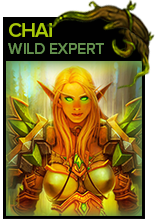
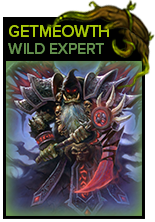
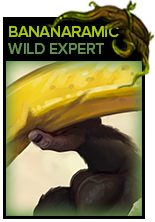

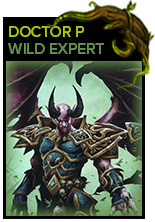
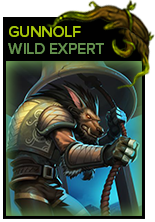
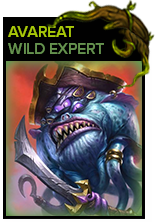
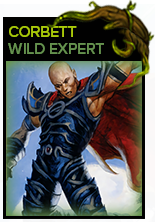
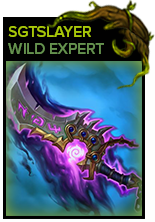



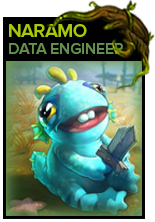

It is fairly new, but since the patch that silently bugged Elise, Highlander druid does see some play. It’s not a string deck, but the number of recorded plays on hsreplay is high enough that I thought the deck would be mentioned here…
In any case the deck is fun to try out and as long as there aren’t too many snip snap warlocks but rather secret mages in your meta you can truly climb with it.
Thank you!
As always, thank you the Report. Guys, Quest Shaman’s and Darkest Hour Warlock’s deck code is invalid, check it please.